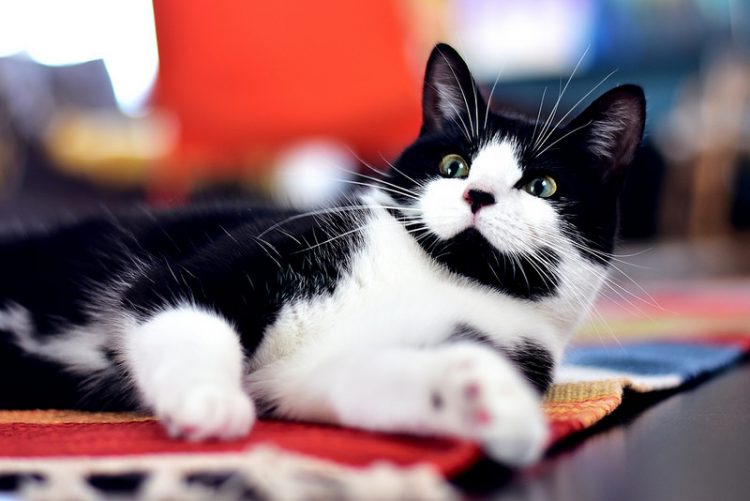
We’ve all seen cats toss around the occasional mouse or mole. But the big news is that playing with their food is good for them — and not just physically.
Rest easy, rodents. We’re talking about food puzzles here.
The idea behind food puzzles, as I understood it, was to help your full-figured felines slim down. Instead of simply stopping by the ol’ kibble bowl and grazing whenever they felt like it, they actually had to work at getting their meals. But there’s more to it than that.
A Healthy Mind
Researchers are finding that these puzzles, or “foraging toys,” also stimulate cats mentally. “These types of toys give your indoor cat something to stalk and hunt, giving them a much needed outlet for their prey drive and hunting instincts,” explains Dr. Stephanie Globerman of Paws, Whiskers & Claws, the Feline Hospital of Marietta, Georgia. “Most behaviorists agree that many behavior problems in cats stem from boredom, frustration and stress.”
If we’ve learned nothing else since cat behaviorist Carole Wilbourn began her groundbreaking work with felines in the 1970s, we have learned that they aren’t so very different from us. And, like us, they need challenges. Globerman maintains that a “lack of mental stimulation can result in up to 30% loss of brain function over time in both animals and humans.”
Food puzzles were, according to a recent study in the Journal of Feline Medicine and Surgery, “originally created to provide enrichment for captive zoo and laboratory animals. They typically consist of any object that can hold food and be manipulated to release food when the animal interacts with it.”
The study itself focuses on how food puzzles, like play circuits (which can be turned into food puzzles — just add kibble or treats) and other interactive toys, benefit cats both emotionally and psychologically. “In cats,” the authors note, “various forms of enrichment (such as play, perches, play towers and novel toys) have been shown to reduce signs of stress.”
The article lists 2 pages of cases “where food puzzles were implemented to aid with a health or behavioral concern.” Several of these cases did involve obese cats, who lost between 6.4 and 20% of their body weight in a 12-month period thanks to the puzzles; a medium-haired spayed female actually lost 30% of her body weight over an 18-month period.

Behavior Issues
The majority of the cats in the study had behavioral issues. These included:
- Separation anxiety, pacing and general agitation whenever their human was getting ready to go somewhere or was simply out of sight.
- Spraying and urination outside the litter box. The latter was sometimes due to chronic feline idiopathic cystitis or Pandora syndrome.
- Fights over meals in a multi-cat household.
- Fear-based and redirected aggression toward other feline housemates.
Even the spayed female mentioned earlier had issues that went beyond her obesity. She kept to a single room, didn’t have much interaction with her people and disliked some kittens who’d just arrived on the scene.
The food puzzles changed all that for these cats. Their problem behaviors either stopped altogether or decreased significantly.
And our friend, the medium-haired female? She played with her humans more and “became interested in the foraging toys” that she saw the kittens playing with. In fact, she “will now forage side by side with the young cats.” With human children, it’s called parallel play.
This DIY food puzzle keeps these diligent cats busy for a while:

Pick Your Puzzle
Food puzzles basically fall into 2 categories:
- Stationary puzzles include mazes and slow-feeder bowls. There are also boards with all sorts of grooves and compartments that can be used for wet food.
- “Rolling” or mobile puzzles include foraging cups and eggs and treat balls. All of these have holes for your cat to coax treats or kibble from.
You can also make your own foraging toys out of old shoeboxes, yogurt containers, paper towel tubes, pill bottles, plastic water bottles and egg cartons. Behaviorist Pam Johnson-Bennett advises against using cardboard or plastic containers if your feline enjoys gnawing on either.
Not all cats are drawn to the same type of food puzzle. For example, the aforementioned study chronicled the habits of a 7-year-old cat and a just-out-of-kittenhood guy who liked to play rough. The older one showed a preference for stationary food puzzles, whereas the younger one worked off his excess energy on the rolling ones.
I’ve never tried food puzzles with my cats, despite having some — Cheshire, Derv and Thor, cover your ears — heavy hitters. I think it’s time I changed that. After all, they’re not just about dieting anymore.


